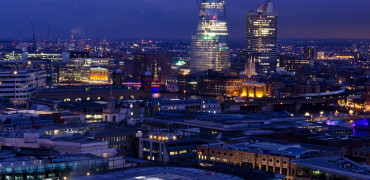On the subject of global warming, business and society ‘must try harder’ – much, much harder.
This is the emphatic conclusion of the Intergovernmental Panel on Climate Change (IPCC), the respected body within the United Nations tasked with providing an objective, scientific state-of-the-planet review – the latest of which landed on our doorsteps and desks earlier this month, with all the dread anticipation of an end-of-term school report for a struggling student.
Taking into account political and economic impacts, the IPCC’s Special Report on Global Warming of 1.5°C documents humankind’s climate-change transgressions, assesses our underachievement and urges improvement.
Its key findings and outputs highlight a number of climate-change impacts that could be avoided by limiting global warming to 1.5°C, rather than 2°C, or worse.
For instance, by 2100, global sea level rise would be 10cm less under lower-temperature scenarios – critical for resilience of coastal and island communities.
Put simply, if we take too long to achieve these goals, then, in fact, we fail
This simply must happen
Bad news for Luddites still peddling a business-as-usual philosophy is that big change is a must:
Any hopes of limiting to 1.5°C will require “rapid and far-reaching” transitions in land, energy, industry, buildings, transport, and cities.
Global net human-caused emissions of CO2 would need to fall some 45% from 2010 levels by 2030, reaching ‘net zero’ around 2050.
The good news, however, is the report also acknowledges some of the kinds of actions needed to achieve this target of 1.5°C are already under way around the world, but, need to accelerate.
Look at the time
Not surprisingly, the figures on which most press, public and political attention have focused are the Celsius metrics, with our relative success all seen as a matter of degrees, literally.
However, it is arguably the other numbers that ultimately count most – the deadline dates, such as 2030, 2050 and 2100. Time is the true deciding factor in the sustainability equation.
Put simply, if we take too long to achieve these goals, then, in fact, we fail.
Tomorrow is too late
The impacts of global warming and climate change are already being felt worldwide and even tomorrow is too late for some homes and habitats – witness the recent case of the remote East Island, wiped off the map by a hurricane in French Frigate Shoals, a Hawaiian atoll northwest of Honolulu.
Unfortunately, shared timeframes are typically not common. Whilst the IPCC report might talk of 2100, many stakeholders are thinking much, much shorter-term.
In Britain, for instance, homeowners at the height of the 1980s’ property boom were moving house on average every 8.63 years. UK workers currently change jobs every 5 years, which is the maximum interval between General Elections and longer than the average tenure of a Chief Executive. A typical Premier League manager lasts just 1165 days.
All of this maelstrom of fast-fail churn seems far removed from the legacy mindset that informed the classic Brundtland definition of sustainable development as “development which meets the needs of the present without compromising the ability of future generations to meet their own needs."
Squaring the circle
So, how are businesses at the sharp end of delivering against the climate-change agenda supposed to square the circle and combine a sense of urgency that meets the demands of myopic markets, with strategic and systemic resilience planning that caters for our children’s children, and beyond?
Well, this is why the ‘science bit’ matters…
The trend amongst global brands for adopting science-based targets is no mere fad. As the website of the Science Based Targets Initiative (SBTi) proclaims: “Setting greenhouse gas emission reduction targets in line with climate science is a great way to future-proof growth.”
The SBTi already has almost 500 companies talking part, ranging from AXA and Chanel, to Wal-Mart and Yamaha, 149 of whom have approved targets in place. Furthermore, to confirm the general direction of travel, you only need to follow the money, with the finance and investment communities actively pressing buttons and pulling levers.
Earlier this year for instance, investors managing over $1tr in assets worldwide openly threw their weight behind the push for science, banding together as the Investor Decarbonisation Initiative and sending letters to chief executives of major companies.
Driving the engines of change
The challenge remains, of course, in converting the hot-topic power of temperatures set at the top into the kinds of direct-current energy needed to drive engines of change on down the supply chain, day in and day out.
Such transformational change is a team game; one where winning turns the Environmental, Social and Governance (ESG) investment criteria of global pension funds into on-site decision-making of facilities managers optimising performance of assets in their property portfolios.
The 2100 vision only works when shared, wisely and widely.
The message therefore needs to be credible, which is where the authoritative science of the IPCC report helps underpin the argument.
It also has to be accessible, though.
Here, every single one of us, professionally and personally has a role to play. We are all teaching; all learning; and every day is still a school day.
Jim McClelland is a Sustainable futurist, editor, journalist, speaker




